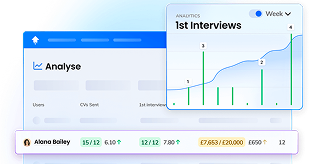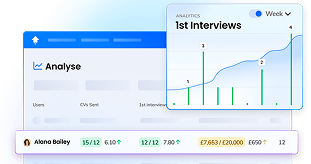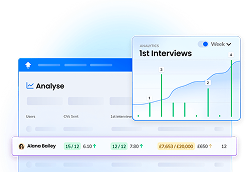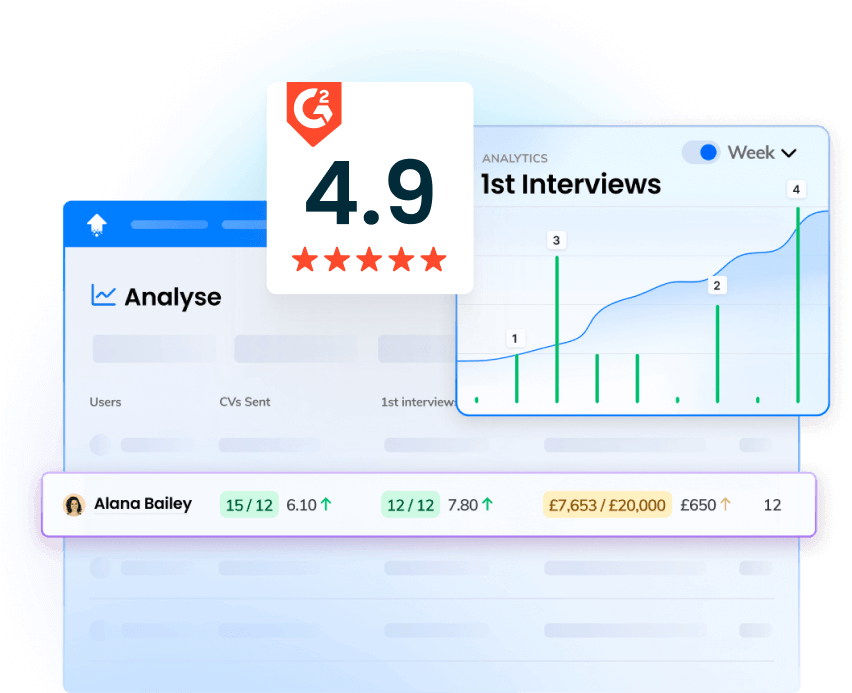Sales has never been harder than it is today.
It’s so tough out there that nine in ten finance, RevOps, and sales leaders say they’re failing to hit their sales quota targets in 2023, with market conditions, misaligned sales activities, and poor time management among the top reasons cited.

Whether you’re struggling to achieve your objectives or simply looking to optimise your sales strategy, sales performance management (SPM) can help.
Read on to find out what SPM is all about, how it can benefit your organisation, and how to manage sales performance yourself — including recommendations on software tools to handle some of the leg work.
Let’s get into it.
What is sales performance management?
At this point, you’re probably wondering: “What is SPM?”
Sales performance management is a set of processes designed to improve the effectiveness of your sales function. Those processes stem from a thorough analysis of an organisation’s business strategies and the way sales reps set about achieving their objectives.
As you know, sales is a complex business. Building a successful sales strategy requires aligning a whole range of smaller, but equally significant, factors — from managing target markets to training and motivating reps to improving the accuracy of sales forecasts.
Each of those elements affects the others. For instance, the size and number of your target markets will naturally shape the makeup of your forecasts, which in turn feeds into how you incentivise individual reps.
For that reason, smart SPM strategies take a holistic, big-picture view that leads to a more efficient sales operation.
Benefits of effective sales performance management
We know the ultimate goal of sales performance management is to build a more effective and efficient sales function. But what specific benefits does it provide? Let’s take a look:
Increased revenues
By improving efficiency, SPM also has a huge impact on sales productivity metrics, which leads to higher revenues. Top-performing sales units are massively more productive than their poorer-performing peers: for every dollar invested in sales, the top quartile of sales teams generate over 2.5 times higher gross margins than the bottom quartile.

More motivated and better trained reps
When you have clear goals and provide all the training, tools, and processes needed to meet them, your sales reps will naturally feel more motivated to perform — because you’ve set them up to succeed.
Clearer forecasting
Accurate sales forecasting is a major headache for many businesses. Indeed, fewer than one in four sales organisations have a sales forecasting accuracy of 75%+.
Sales performance management doesn’t give you a crystal ball — but it does help you gather the data to produce more reliable sales and compensation forecasts.
Strong sales culture and lower turnover
The culture of your sales team speaks not just to what you aim to achieve, but also to how and why you’ll achieve it. And it’s far easier to build a positive culture when you have a strong SPM strategy in place to guide and support your reps.
Creating a positive culture brings the very best out of your salespeople, motivating them to hit their goals. And when reps agree or strongly agree that they feel motivated at work, they’re 2.6 times more likely not to look for another job.
Data-driven compensation and higher quota attainment
Implementing a sales performance management system lessens the chances of paying sales reps too little (or too much) compensation. And when reps know they’re going to be fairly rewarded for their efforts, they’re more likely to be focused on and motivated toward hitting quota.
This feeds back into retention, too: 64% of reps who believe they’re not being paid fairly have applied for another job within the last six months. Which just goes to show the importance of a holistic SPM plan.
5 key components of successful sales performance management
We know that sales performance management is important and that it can have a substantial positive impact on your business. Now, let’s take a look at the most important factors in building an SPM strategy.
#1 Comprehensive planning process
As with everything else in sales, a successful SPM program begins with extensive sales planning that considers:
- The best way to organise your accounts
- Which sales rep to assign to which target market
- How many reps to assign to a given target market
Optimising your accounts and target markets this way gives your sales unit the best chance of hitting quota. This is a virtuous cycle, because as anyone who’s ever worked in sales knows, when a sales team starts performing well, reps feel more motivated to keep doing the right things.
#2 Digitised management approach
Transparency is a key element of any sales performance management plan. Each member of your team needs to understand what’s expected of them, how to achieve it, and how they’re currently performing against quota.
Once upon a time, you might have been able to do all that with a few hand-drawn wall charts. But sophisticated SPM requires a digitised approach to management, incorporating virtual sales dashboards, access to training resources, a log of agreed individual objectives, and more.
#3 Incentives
Building an effective commission structure is about more than telling your reps: “The more you sell, the more you earn.” You want to incentivise the right kinds of sales behaviours, from the types of customers they target to the products they sell. That way, they’ll inevitably focus on activities that have the biggest benefit to your business, making it more likely you’ll hit your targets.
For that reason, setting sales incentives is rarely a one-and-done exercise. More likely, they’ll require regular updates to ensure your sales function capitalises on new opportunities, products, and priorities. They need to be flexible enough to adapt to market conditions, without being so fluid that reps never understand what’s expected of them. It’s a tricky balancing act.
#4 Analysis
Sales performance management should never be based on gut feeling. Instead, you should focus on capturing useful, clean sales data and analysing it regularly to inform your future direction. Because if you don’t understand how well your systems and processes are working at the moment, how are you going to make them better?
Ideally, you also want to find out how you’re performing against industry benchmarks. If your competitors have higher conversion rates or average total contract values, you need to understand why you’re falling short. That way, you can course-correct fast.
#5 Forecasting
Analysis leads us to another essential component of SPM: accurate forecasting. The better you can predict changes in demand for your product or service, the more easily you’ll be able to adapt and thrive in an ever-evolving business landscape. Yet just 45% of sales leaders say they have high confidence in the current accuracy of their sales forecasting.

7 steps to implementing an effective sales performance management process
Enough theory: let’s explore how to develop and roll out your SPM strategy.
#1 Share company goals with your team
Presumably, your organisation has some kind of top-level goal — and the sales function almost certainly plays a key role in achieving it.
Now’s the time to share this plan with your sales reps, giving them the context behind their individual targets. Because it’s often more motivating for reps to feel like part of a team working toward a big-picture objective than an individual with an arbitrary revenue quota to hit.
Getting buy-in is essential at this stage, so be sure to solicit feedback from your team. They might have suggestions that inform their performance targets or solutions to streamline your existing systems and boost efficiency.
#2 Agree on performance metrics
Once you’ve communicated the company’s goals and what they mean to your sales unit, it’s time to break that top-level objective down into relevant, meaningful metrics and KPIs for each rep to inform their day-to-day actions and help them manage their workloads. These might include:
- Individual sales quotas. This could simply be your top-level revenue target divided by the number of reps on your team. Or it could be a little more sophisticated, with targets based on a rep’s territory or the types of products they’re selling. Be sure to monitor these individual quotas over time: ideally, they should be challenging but achievable. If none of your reps is anywhere near hitting quota — or, conversely, if they’re all miles ahead of target — it’s time to adjust your numbers.
- Activity levels. Sales has always been a numbers game. The more prospects you find, emails you send, phone calls you make, and pitches you schedule, the more you’ll sell. For that reason, many organisations set activity-related KPIs for reps, such as making 100 phone calls per day or spending five hours per week updating your CRM. That way, your reps are totally clear on what you expect from them. On the downside, these types of metrics don’t feel very motivational.
- Pipeline conversion rates. While activity levels are important, they don’t mean much without conversion-related metrics to back them up. It’s easy enough to fill your CRM with prospects, but it doesn’t count for anything if none of those prospects become leads or paying customers. Track your conversion rate at both a team and individual level so you can identify reps who need support to hit their targets. Additionally, keep tabs on conversion rates between different stages in your pipeline: it’s better to qualify 10 leads and have three reach the negotiation stage than to qualify 20 but only one makes it to negotiation.
#3 Implement a coaching and training programme
Speaking of supporting your reps, you’ll also want to build a coaching and training structure to ensure everyone on your team has the skills and resources to thrive in their role — plus the time to access them.
Access to high-quality coaching and training has another major benefit, too: it helps keep your reps motivated and makes them less likely to leave. Indeed, when employees get access to professional development opportunities, they’re…
- 15% more engaged
- Have 34% higher retention
…than those who don’t get access.

This is yet another example of how sales performance management requires a holistic approach. Effective training gives reps the tools to succeed and encourages them to stick with you for the long term, giving you the benefits of an experienced and motivated sales team.
#4 Develop reasonable compensation structures
Once you’ve set performance metrics, it’s much easier to build an effective compensation structure. There’s no one-size-fits-all approach to sales incentives: depending on the makeup and goals of your sales organisation, you might want to reward reps for hitting their individual KPIs, achieving team-level targets, or something else entirely.
Just remember that the goal here is to reward your employees for positive behaviours, which doesn’t always translate to simply generating as much revenue as possible.
#5 Manage your sales reps
Having set individual goals for your reps and developed a training and development program to help them meet quota, you need to check in with them regularly to make sure they’re on track. If they aren’t, you need to agree on a plan to improve their performance. While the structure of a sales performance review will naturally vary from one organisation to another, they should typically include:
- A reminder of the sales metrics against which the rep is being assessed
- Performance against those metrics for the current quarter/year or since their last review
- Context behind those numbers: where and why are they ahead of quota or falling short?
- Agreed action points for the next review period
This is a crucial element of SPM for sales managers, with 53% of salespeople agreeing that a good manager is a top motivator.

#6 Gather feedback from reps
Feedback isn’t a one-way street. Just as it’s important to keep your reps in the loop about how they’re performing, it’s vital to hear their point of view.
What areas do they need support? What tools would help them generate more revenue? How do they feel about their current performance?
#7 Use SPM software
The final step to managing sales performance is to choose the right SPM software for your business. It’ll help your sales managers learn what’s affecting their team’s performance, prioritise their time, and quickly build reports to communicate your progress against individual and team-level metrics.
All of which gives you the time to focus on what matters most: growing your business.
“Sales managers currently lack control of their team's direction and performance. They're not given the training and insights they need when they get promoted from being a top-performing rep to managing a team,” explains Derry Holt, CEO of OneUp.
“Ultimately, this means they spend 90% of their time running business-as-usual tasks or reacting to situations and putting out fires. There's no time left to be proactive — and, even if there was, they wouldn't know where to focus their team's time.”
5 best SPM software tools to implement
We know that investing in the best sales performance management tools makes a big difference to the implementation of your SPM strategy. But with so many options in the sales performance management market, how can you be sure you’re making the right choice?
Make your life easier by reading our top recommendations:
OneUp: Best all-rounder for recruitment and sales teams

OneUp is a sales performance platform trusted by 5,000+ users. It offers the following benefits to sales managers:
- Leverage enhanced data analysis: Rather than relying on spreadsheets for reporting, you can gather data straight from your CRM, timesheets, sales engagement platform, and VoIP system, all in one place.
- Keep sales reps motivated: Share live leaderboards, set missions and challenges, and celebrate milestones to keep your team focused on success and foster healthy competition.
- Communicate performance effectively: Update your team via live chat or email, share performance data via your office TV system, and round up the previous day’s activity in a daily digest email to keep everyone in the loop.
- Save time through automation: Cut out repetitive, low-value work by automating tasks like sending performance emails and downloading custom sales reports.
Gong: Best for sales forecasting

Gong is an AI-powered sales forecasting tool designed to increase accuracy around revenue predictions. It uses over 300 signals to forecast deal outcomes and claims to be 20% more accurate than competitor tools that only leverage CRM data.
Mindtickle: Best for professional development

Mindtickle is a sales readiness platform that helps managers identify skills gaps within their teams and fix them before they become a problem by providing targeted training materials for each rep. It uses AI-powered reminders to reinforce previous messages and ensure ongoing development becomes part of your team’s day-to-day activity.
ElevateHQ: Best for visualising trends

ElevateHQ gives sales reps an overview of their performance and commissions through visual dashboards that update in real time. Big on transparency, the platform allows users to dig under the hood to find out how their compensations have been calculated and which rules are governing their future earnings. The platform also notifies reps when they’re falling behind target or are smashing their quota.
Weflow: Best for pipeline management

Weflow helps improve the hygiene of sales pipelines by automating activity tracking, prompting reps to update important data fields, and sharing methodology frameworks. By increasing the accuracy of activity data, the platform makes it easier for sales managers to identify revenue opportunities, get involved in at-risk deals, and spot potential training requirements.
Final thoughts + how OneUp can help
A sales performance management strategy isn’t yet another thing for your reps to worry about if they slip behind the target.
Instead, it’s a way to build and embed a high-performance culture in your sales team, giving your reps access to all the data, tools, and resources they need — and teaching them the behaviours that deliver the best results.
OneUp can help by providing real-time data, custom dashboards, and engaging gamification. All the stuff that keeps reps laser-focused on smashing quota.
But don’t take our word for it. See for yourself by booking your demo today.


















